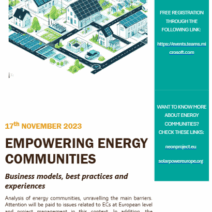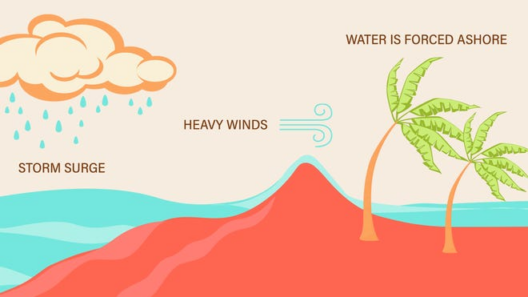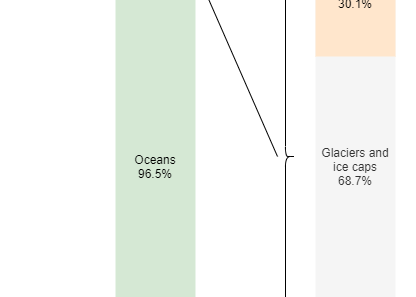As the sun rises each day, it casts light upon an intricate tapestry woven from land and ocean—a constant reminder of the delicate interplay between terrestrial ecosystems and marine environments. Among the most pressing crises of our time is the inexorable rise of sea levels, a phenomenon orchestrated by climate change and resulting in profound repercussions for human civilization and biodiversity. This article delves into the multifaceted impacts of sea level rise, unveiling the interconnected web of consequences that demand our attention and action.
The Sea in Peril: Understanding Sea Level Rise
Over the past century, global sea levels have risen dramatically, with projections indicating an acceleration in this trend due to the melting of ice sheets in Greenland and Antarctica, thermal expansion of seawater, and the contribution of glacial runoff. While seemingly an abstract scientific phenomenon, the implications of rising ocean levels are immediate and tangible. Coastal communities are witnessing increased instances of flooding, erosion, and saltwater intrusion, each eroding the foundation of livelihoods and ecosystems alike.
Communities at the Waters’ Edge: Vulnerability of Coastal Settlements
Coastal cities are among the most vulnerable to the encroaching tides of sea level rise. Infrastructure that once stood resilient is now at risk, with essential services jeopardized as storm surges and chronic flooding become the new norm. The socioeconomic ramifications are staggering: property values in affected areas plummet, insurance premiums skyrocket, and the financial stability of millions hangs precariously in the balance.
Moreover, these communities are often the first to bear the brunt of extreme weather events, exacerbated by climate change. The juxtaposition of human habitations and rising seas creates a complex challenge that requires innovative solutions. Mitigating the impacts necessitates a multifaceted approach—both in engineering and urban planning.
Waterlogged Dreams: Psychological and Cultural Effects
Beyond the tangible destruction of property, the psychological and cultural ramifications of rising sea levels cannot be underestimated. Entire communities may face displacement, leading to a loss of identity and cultural heritage. The stories, traditions, and histories tied to coastal lands are at risk of being swept away, creating a disconnection between people and their ancestral homes.
The psychological toll manifests through anxiety, depression, and uncertainty about the future. The individuals and families uprooted from their homes may find themselves in a liminal space—caught between the past and an uncertain future in unfamiliar territories. Cultivating resilience requires not only financial and physical resources but also emotional and community support systems to help reintegrate displaced populations.
The Ecosystem Under Siege: Biodiversity in Peril
As oceans swell, the ecosystems they encompass face existential challenges. Coastal wetlands, which serve as invaluable buffers against storms and provide nurseries for marine life, are increasingly threatened by inundation and habitat loss. The delicate balance between terrestrial and aquatic ecosystems is thrown into disarray, with cascading effects for species that rely on these environments for survival.
Coral reefs, often referred to as the rainforests of the sea, find themselves under siege from rising temperatures and ocean acidification. The symbiotic relationships fostered within these ecosystems falter, leading to a phenomenon known as coral bleaching, where vibrant reefs fade to ghostly remnants. This loss not only devastates marine biodiversity but also affects local economies reliant on fishing and tourism—further compounding the hardships faced by coastal communities.
A Paradigm Shift: Rethinking Infrastructure and Urban Development
To tackle the impending crisis of rising sea levels, a substantive shift in infrastructure and urban development paradigms is crucial. Reactive measures—such as building higher sea walls—can offer temporary reprieve, but they do not address the underlying issue of climate change. Sustainable practices must be integrated into the fabric of coastal planning, prioritizing adaptability and resilience.
Implementing green infrastructure, such as the restoration of natural ecosystems like mangroves and wetlands, can serve multiple purposes. Not only do these ecosystems act as natural barriers against storm surges, but they also act as carbon sinks, playing a pivotal role in climate mitigation. Encouraging community involvement and stewardship further enriches this paradigm shift, allowing for localized solutions that empower individuals.
Global Action for Local Consequences: The Need for Collaboration
The complexity of sea level rise demands a collaborative international effort. As the impacts transcend borders, countries must come together to create robust frameworks that address both mitigation and adaptation. Climate financing, technological innovation, and knowledge sharing are indispensable in forging resilient pathways forward.
Moreover, public awareness campaigns emphasizing the urgency of the situation can galvanize communities to advocate for policies that safeguard their futures. Each individual’s voice is a vital part of this collective movement, urging leaders to take decisive action against the anthropogenic causes of climate change.
A Summoning Call to Action
The rise of sea levels, while an abstract statistic to some, is already reshaping the fabric of human existence. The impacts ripple through communities, economies, ecosystems, and psyches, demanding a reevaluation of our relationship with nature. As stewards of the Earth, our collective future hinges on our readiness to confront this reality and implement holistic solutions that foster resilience—a responsibility we cannot afford to ignore.







